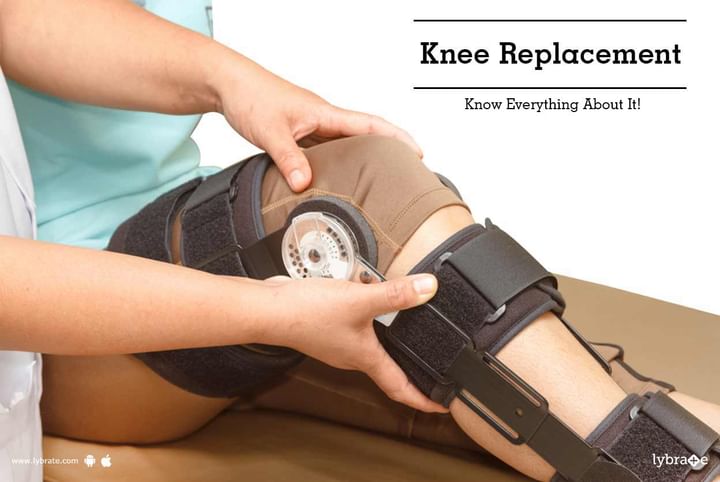Knee Replacement - Know Everything About It!
Knee is a hinge joint where the lower leg bone tibia meets the thigh bone femur. During osteoarthritis, cartilage or ligament defects and degenerative arthritis, knee replacement surgery is recommended world-wide to get relief from extreme pain. Knee replacement surgery, also known as knee arthroscopy, is a surgical procedure, in which the affected knee joint is replaced with synthetic material. The most likely candidates for total knee replacement are the patients with severe destruction of the knee joint coupled with progressive pain and impaired function.
Modern technological advances have made computer assisted knee replacement surgery extremely popular around the globe. In this surgery, the surgeon is assisted by a computer to remove the optimum amount and angle of the bone, which otherwise is done by inspecting manually. This is an excellent example of surgery through small incision and it eliminates the chances of human error. A perfect alignment and balance is achieved and hence longevity is also increased to 20 - 30 years. Knee replacement surgery is also specific to gender as the anatomy of male and female patients is different.
There are many types of knee replacements, most common being the total knee replacement or Total Knee Arthroplasty. In addition, there is partial knee replacement, bilateral knee replacement, revision knee replacement and knee arthroscopy.
In knee replacement surgery, the worn out surfaces of joints of knee are replaced with artificial implant of plastic and metal. The lower end of the femur bone is removed and replaced with a metal shell. The upper end of the lower leg bone (tibia) is also removed and replaced with a channelled plastic implant with a metal stem. A plastic ball is also added under the kneecap depending on its condition. These artificial components are commonly referred as prosthesis. The design of these highly flexible implants replicate knee, with the rotating knee replacement implants assist in backward and forward swing of the legs.
Patients whose knee joints have been damaged by either trauma or progressive arthritis should consider total knee replacement surgery. Post-surgical hospital stay after knee joint replacement is usually three to five days. The surgery has a very high success rate and shows dramatic improvement after a month. This improvement is most notable one month or more after surgery. The pain caused by the damaged joint is reduced significantly when the new gliding surface is constructed during surgery. Initially, patient will walk with the help of a walking aid until the knee is able to support full body weight. After six weeks, patient can walk comfortably with minimal assistance. Patients with artificial joints are prescribed to take antibiotics during the course of any elective invasive procedures including dental work. Physiotherapy is an essential part of rehabilitation and it will increase the muscle strength and patient can enjoy most activities, except running and jumping.
In case you have a concern or query you can always consult an expert & get answers to your questions!



+1.svg)
